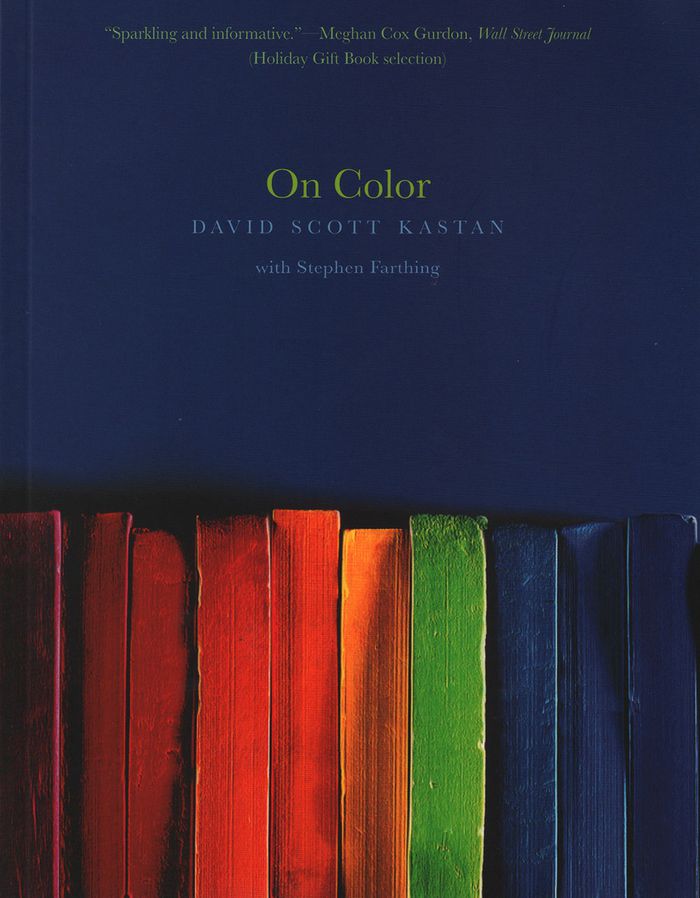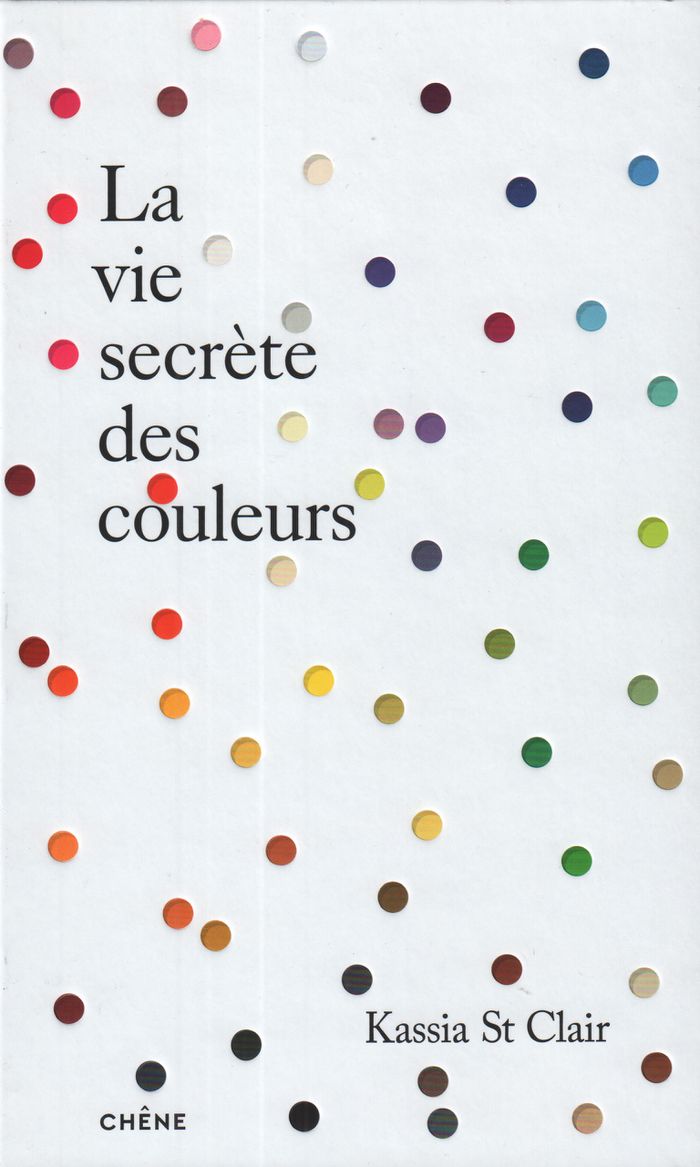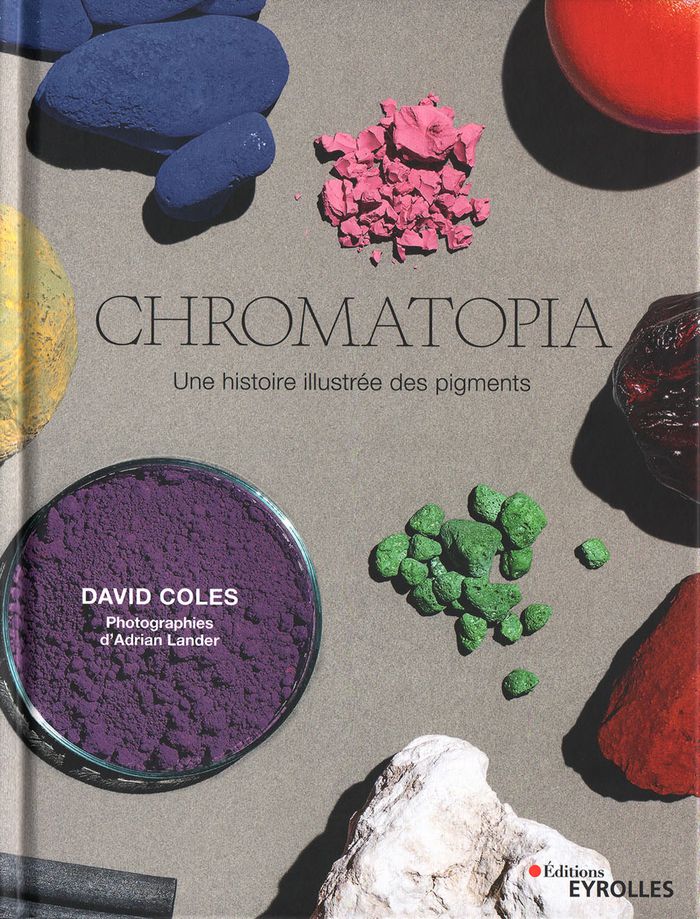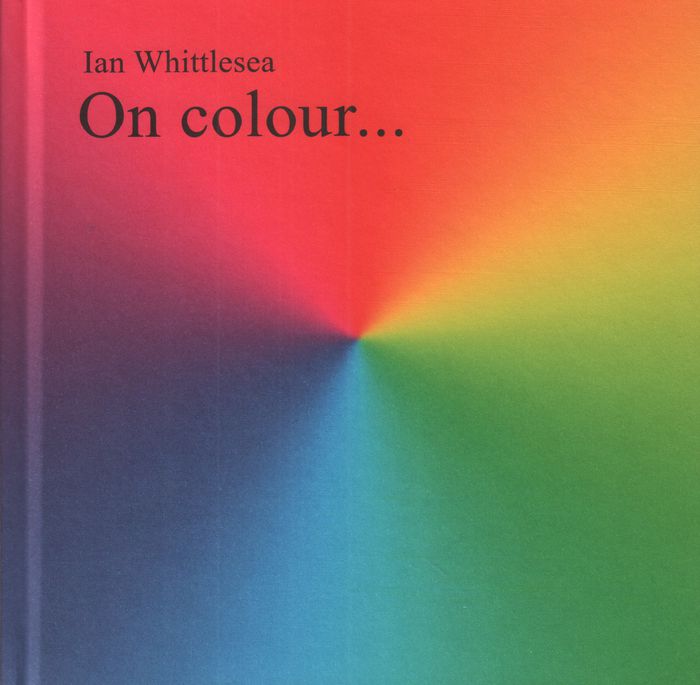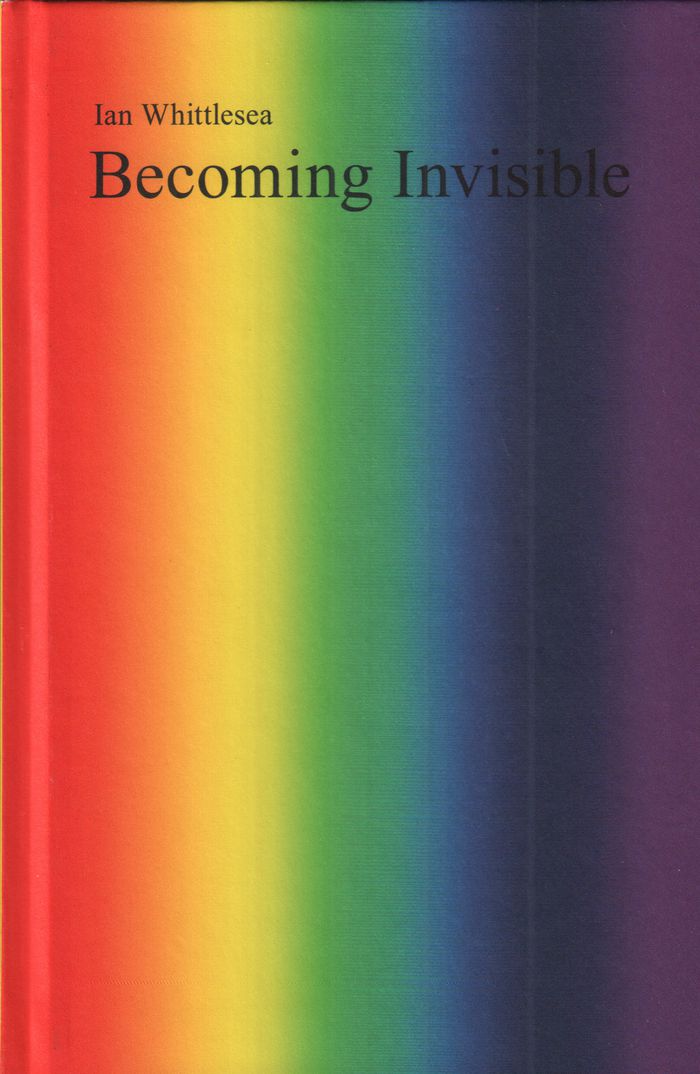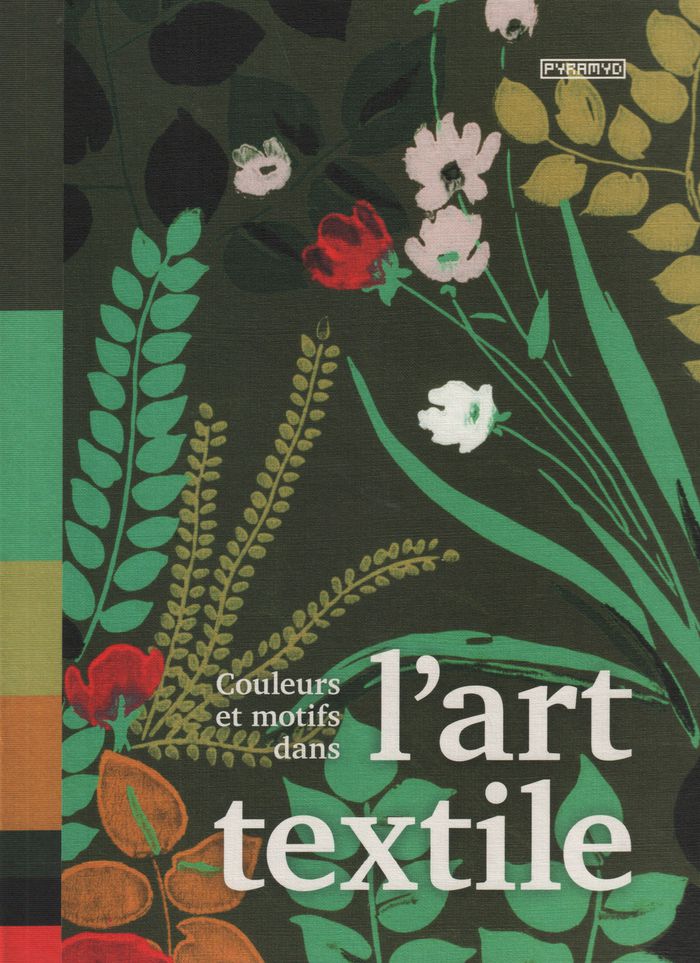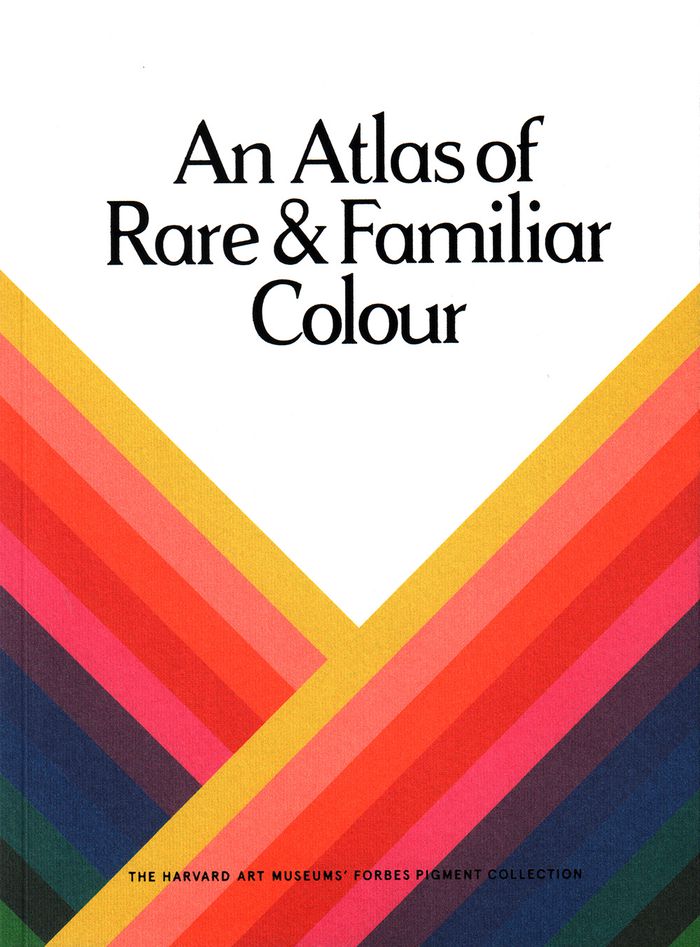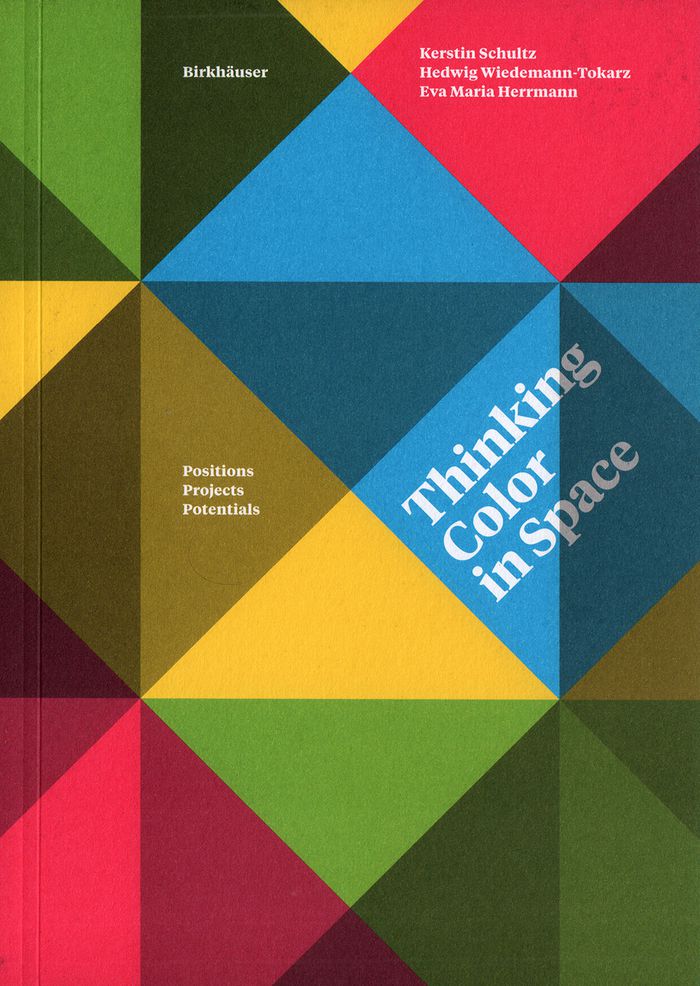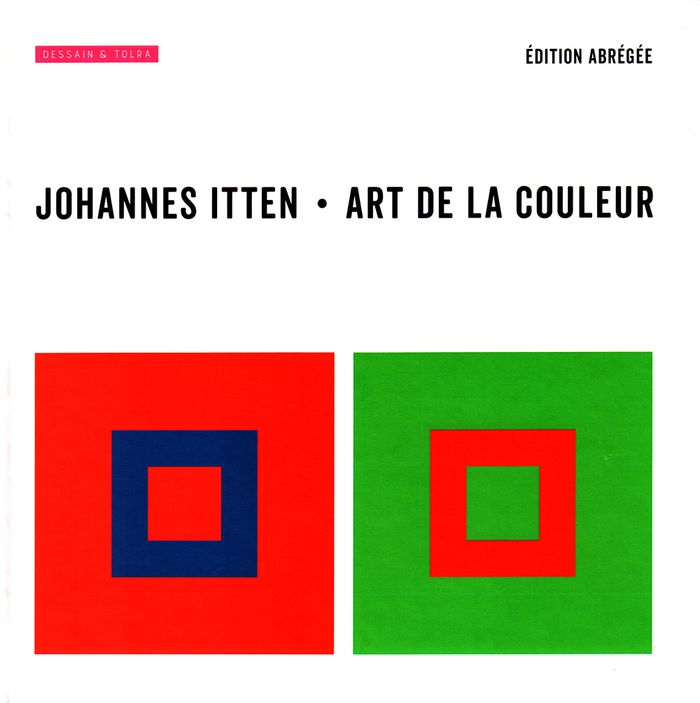On color
$30.00
(disponible en magasin)
Résumé:
Our lives are saturated by color. We live in a world of vivid colors, and color marks our psychological and social existence. But for all color’s inescapability, we don’t know much about it. Now authors David Scott Kastan and Stephen Farthing offer an exploration of one of the most intriguing and least understood aspects of everyday experience. Kastan and Farthing, a(...)
octobre 2019
On color
Actions:
Prix:
$30.00
(disponible en magasin)
Résumé:
Our lives are saturated by color. We live in a world of vivid colors, and color marks our psychological and social existence. But for all color’s inescapability, we don’t know much about it. Now authors David Scott Kastan and Stephen Farthing offer an exploration of one of the most intriguing and least understood aspects of everyday experience. Kastan and Farthing, a scholar and a painter, respectively, investigate color from numerous perspectives: literary, historical, cultural, anthropological, philosophical, art historical, political, and scientific.
La vie secrète des couleurs
$39.95
(disponible sur commande)
Résumé:
De la période bleue de Picasso au charbon de bois des grottes de Lascaux, des tournesols jaune de Van Gogh au rose fluorescent du mouvement punk, parcourez l’histoire à travers la mode, la politique, l’art et la guerre. Ce livre raconte l’histoire vivante de notre culture.
La vie secrète des couleurs
Actions:
Prix:
$39.95
(disponible sur commande)
Résumé:
De la période bleue de Picasso au charbon de bois des grottes de Lascaux, des tournesols jaune de Van Gogh au rose fluorescent du mouvement punk, parcourez l’histoire à travers la mode, la politique, l’art et la guerre. Ce livre raconte l’histoire vivante de notre culture.
$48.95
(disponible en magasin)
Résumé:
Noir de fumée, orpiment, brun momie, sang-de-dragon, Vantablack... connaissez-vous les pigments qui se cachent derrière ces noms mystérieux ? Ce livre révèle leur histoire et leurs incroyables pérégrinations aux quatre coins du globe, sur plusieurs millénaires. Des ocres naturelles ayant servi à réaliser les plus anciennes oeuvres d'art aux peintures phosphorescentes(...)
Chromatopia : une histoire illustrée des pigments
Actions:
Prix:
$48.95
(disponible en magasin)
Résumé:
Noir de fumée, orpiment, brun momie, sang-de-dragon, Vantablack... connaissez-vous les pigments qui se cachent derrière ces noms mystérieux ? Ce livre révèle leur histoire et leurs incroyables pérégrinations aux quatre coins du globe, sur plusieurs millénaires. Des ocres naturelles ayant servi à réaliser les plus anciennes oeuvres d'art aux peintures phosphorescentes élaborées par la science moderne, découvrez l'immense diversité des pigments et leur origine. Retrouvez également plusieurs recettes pour fabriquer vos propres pigments et une galerie d'oeuvres d'artistes rendant hommage à la couleur dans toute sa diversité.
On colour...
$39.95
(disponible en magasin)
Résumé:
'On Colour…' extends the theories of color harmony that Joahnnes Itten taught at the Bauhaus. Beautifully designed and printed, it describes how one can, potentially, produce the 'white cloud of invisibility' and documents the author's own attempts to manifest the cloud.
On colour...
Actions:
Prix:
$39.95
(disponible en magasin)
Résumé:
'On Colour…' extends the theories of color harmony that Joahnnes Itten taught at the Bauhaus. Beautifully designed and printed, it describes how one can, potentially, produce the 'white cloud of invisibility' and documents the author's own attempts to manifest the cloud.
Becoming invisible
$34.95
(disponible sur commande)
Résumé:
Both an artist's book and a would-be practical guide, this publication offers occult instructions for becoming invisible by meditating on the color spectrum.
Becoming invisible
Actions:
Prix:
$34.95
(disponible sur commande)
Résumé:
Both an artist's book and a would-be practical guide, this publication offers occult instructions for becoming invisible by meditating on the color spectrum.
$58.95
(disponible sur commande)
Résumé:
« Couleurs et motifs dans l’art textile » propose une analyse des palettes de couleurs employées dans les papiers peints et tissus d’ameublement du XVe siècle à nos jours. Des tapisseries médiévales aux chintz indiens en passant par les broderies Renaissance, chaque textile ou papier peint, présenté par ordre chronologique, est accompagné d’une grille de couleur(...)
Couleurs et motifs dans l'art textile
Actions:
Prix:
$58.95
(disponible sur commande)
Résumé:
« Couleurs et motifs dans l’art textile » propose une analyse des palettes de couleurs employées dans les papiers peints et tissus d’ameublement du XVe siècle à nos jours. Des tapisseries médiévales aux chintz indiens en passant par les broderies Renaissance, chaque textile ou papier peint, présenté par ordre chronologique, est accompagné d’une grille de couleur proportionnelle très simple. Ces palettes montrent clairement les associations de couleurs qui, à travers l’histoire, ont permis de créer les splendides motifs aujourd’hui encore admirés et reproduits. Chaque échantillon est étiqueté avec sa valeur CMJN, permettant ainsi au lecteur de reproduire les différentes associations présentées.
$48.00
(disponible sur commande)
Résumé:
The Straus Center for Conservation and Technical Studies at the Harvard Art Museums possesses over 2500 of the world's rarest pigments. Visually and anthropologically excavating the extraordinary collection, Atelier Editions' monograph examines the contained artefacts' providence, composition, symbology and application. Whilst simultaneously exploring the larger field of(...)
janvier 2019
An atlas of rare & familiar colour
Actions:
Prix:
$48.00
(disponible sur commande)
Résumé:
The Straus Center for Conservation and Technical Studies at the Harvard Art Museums possesses over 2500 of the world's rarest pigments. Visually and anthropologically excavating the extraordinary collection, Atelier Editions' monograph examines the contained artefacts' providence, composition, symbology and application. Whilst simultaneously exploring the larger field of chromatics, utilising a variety of theoretical frameworks to interpret the collection anew. An introduction to the monograph is authored by Straus Center Director Dr. Narayan Khandekar.
$65.00
(disponible sur commande)
Résumé:
The Straus Center for Conservation and Technical Studies at the Harvard Art Museums possesses over 2500 of the world's rarest pigments. Visually and anthropologically excavating the extraordinary collection, Atelier Editions' monograph examines the contained artefacts' providence, composition, symbology and application. Whilst simultaneously exploring the larger field of(...)
janvier 2019
An atlas of rare and familiar colour
Actions:
Prix:
$65.00
(disponible sur commande)
Résumé:
The Straus Center for Conservation and Technical Studies at the Harvard Art Museums possesses over 2500 of the world's rarest pigments. Visually and anthropologically excavating the extraordinary collection, Atelier Editions' monograph examines the contained artefacts' providence, composition, symbology and application. Whilst simultaneously exploring the larger field of chromatics, utilising a variety of theoretical frameworks to interpret the collection anew. An introduction to the monograph is authored by Straus Center Director Dr. Narayan Khandekar.
$78.95
(disponible sur commande)
Résumé:
The interaction between color and architecture determines our perception of space, and defines the tectonic relationships. The fascinating spatial potential of color, and the multi-layered dimensions of interpretation in the experience of color are design and communication means which, however, are often not fully used ? color oscillates between autonomy and functional(...)
novembre 2018
Thinking color in space: positions, projects, potentials
Actions:
Prix:
$78.95
(disponible sur commande)
Résumé:
The interaction between color and architecture determines our perception of space, and defines the tectonic relationships. The fascinating spatial potential of color, and the multi-layered dimensions of interpretation in the experience of color are design and communication means which, however, are often not fully used ? color oscillates between autonomy and functional purpose, and should be understood as a distinct "material" that can be used as part of the design. The book focuses both on the tangible aspects and design criteria of color, and on its indeterminate nature and its experience value. Using examples in art and architecture, the spatial interdependency of color is illustrated, as is its interaction with structure, light, and geometry.
$32.95
(disponible sur commande)
Résumé:
La théorie des couleurs de Joannes Itten peut sans nul doute être considérée comme un enseignement fondamental de référence universelle par tous ceux qui ont à connaître de la couleur et de ses problèmes. L’auteur fut l’un des premiers professeurs du Bahaus de Weimar qui a fortement inspiré l’enseignement artistique contemporain dans tous les grands pays du monde. Son « (...)
Art de la couleur, édition abrégée
Actions:
Prix:
$32.95
(disponible sur commande)
Résumé:
La théorie des couleurs de Joannes Itten peut sans nul doute être considérée comme un enseignement fondamental de référence universelle par tous ceux qui ont à connaître de la couleur et de ses problèmes. L’auteur fut l’un des premiers professeurs du Bahaus de Weimar qui a fortement inspiré l’enseignement artistique contemporain dans tous les grands pays du monde. Son « Art de la couleur » est un enseignement né des méditations d’un artiste et d’un pédagogue. Cette édition abrégée en reprend les thèmes essentiels dans un texte mis à la portée d’un vaste public : étudiants de toutes disciplines, techniciens de l’industrie graphique, artisans, amateurs d’art… Elle a été conçue pour rendre plus familiers les problèmes fondamentaux que pose la couleur et pour aider ainsi à une meilleure compréhension de la création artistique.
